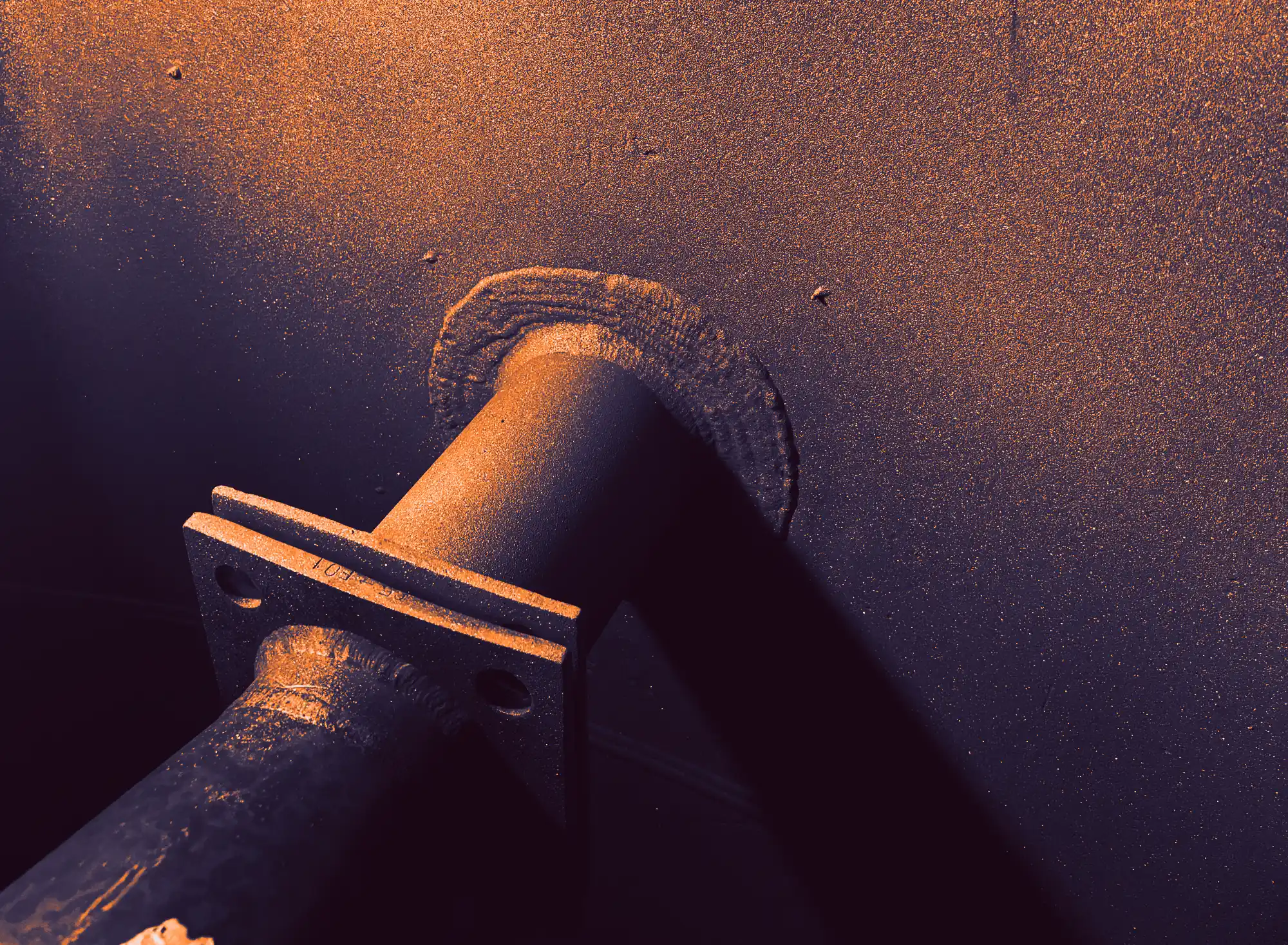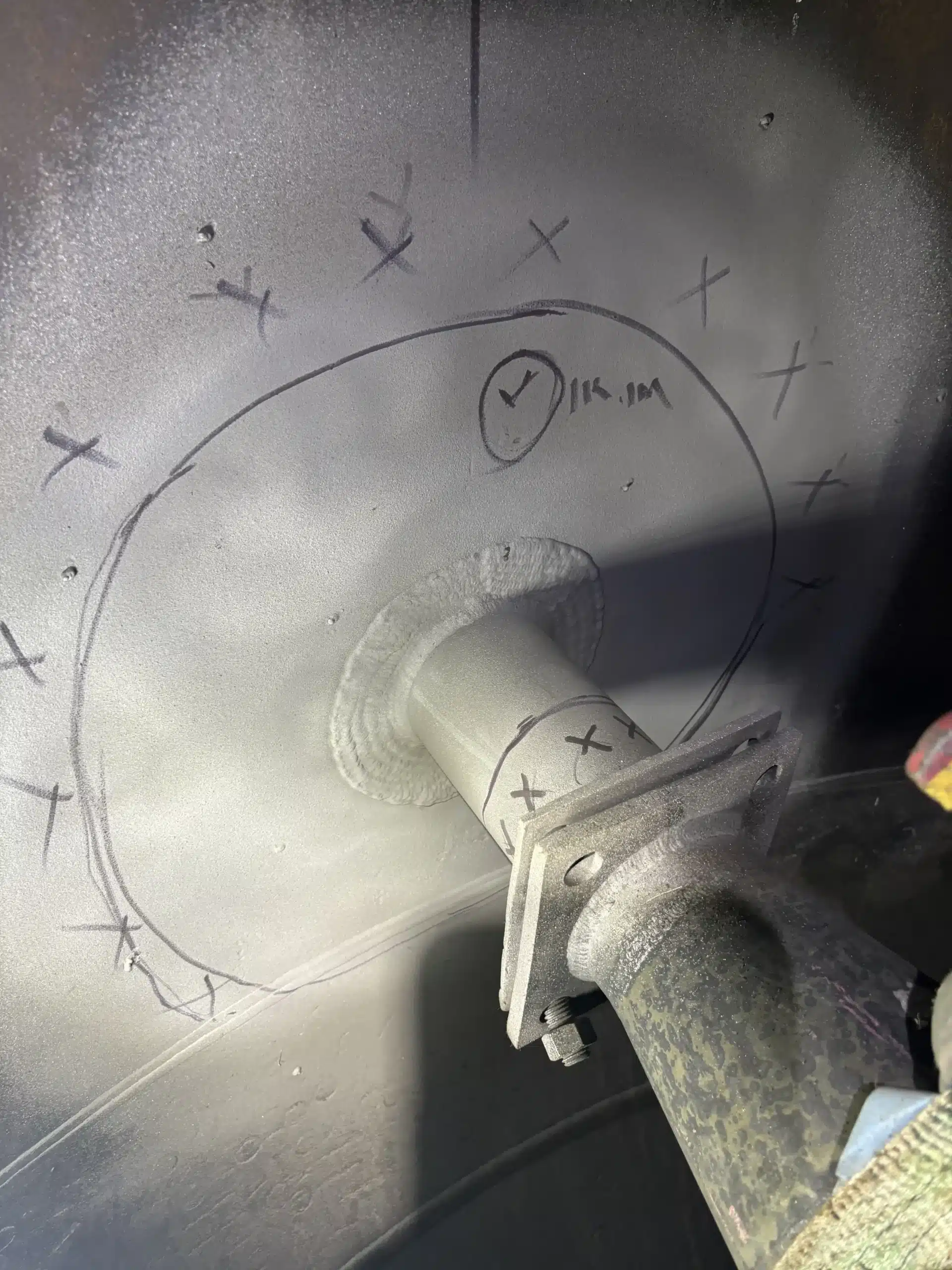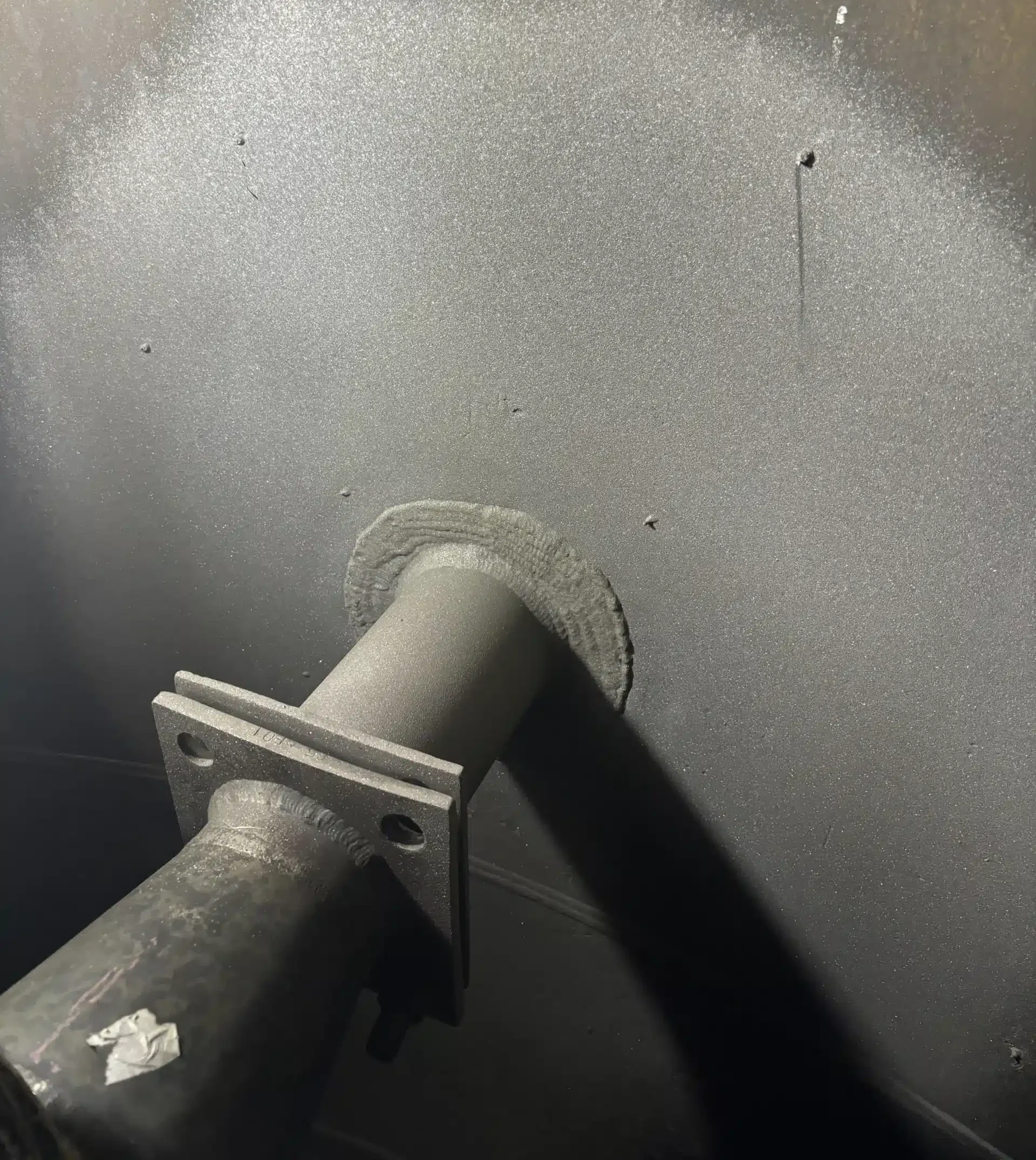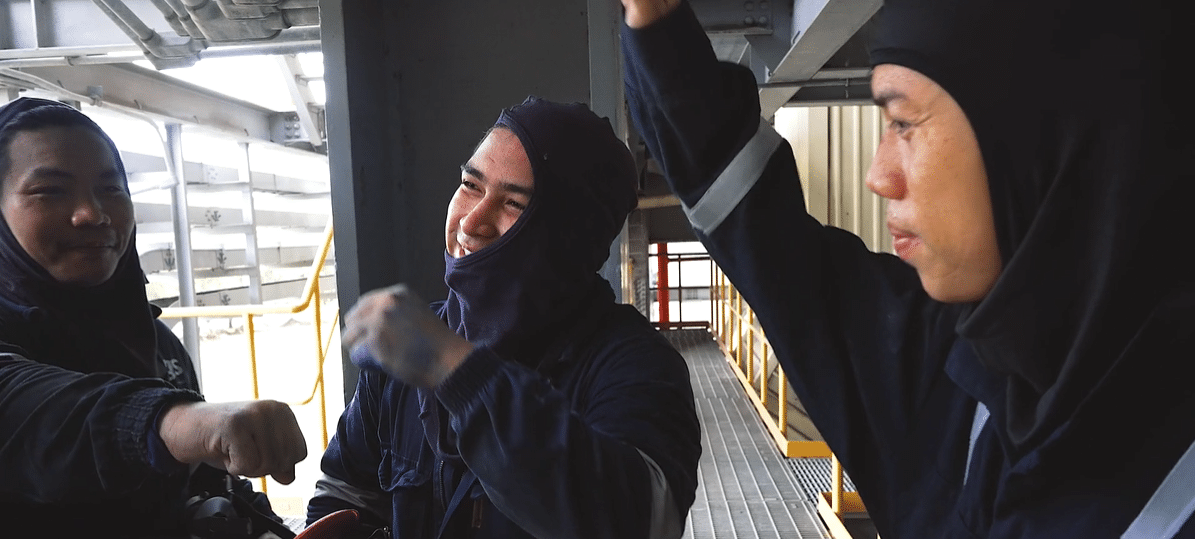HVTS® Protects Critical Refinery Assets Saving 10–12 days of TA time
Challenge Overview
During a Q4 2024 turnaround, a Saudi Arabian refinery faced significant corrosion challenges across four critical equipment units, including areas where existing weld overlay protection had partially failed. The conventional repair approach of welding with mandatory post-weld heat treatment (PWHT) posed unfeasible time and cost constraints, particularly given the variety of base materials and weld transition zones requiring protection.
Location: Saudi Arabia
Timing: Q4 2024
Type: Turnaround Maintenance
Critical Issue: Significant corrosion challenges and partial weld overlay (WOL) failure
Project Highlights
Equipment Treated:
• Heat Exchanger Nozzle
• Heat Exchanger Shell
• Rich Amine Drum Impingement Plate
• Net Gas Scrubber Nozzle
Project Execution and Quality Control
The project execution maintained a faultless safety record with zero incidents while fully complying with the refinery’s confined space and equipment requirements. The team utilized Air Horn ventilation for confined space applications and implemented comprehensive quality control measures with dedicated QC representatives throughout the project duration.

HVTS® Application and Benefits
The HVTS® solution delivered multiple significant advantages over traditional repair methods. The cladding can be applied directly over failed weld overlay areas after appropriate surface preparation, eliminating the need for complete WOL removal and replacement. HVTS is particularly effective for protecting transition zones between welds and dissimilar welds. A key benefit is that no specific welding procedures are required for different material combinations, and it can be applied to any base material without additional qualification procedures.
HVTS eliminated the need for PWHT and associated heat affected zones (HAZ) concerns while providing a crucial metallurgical upgrade against highly corrosive environments. The technology eliminates the risk of distortion that typically occurs due to welding heat input. The application process proved three times faster than traditional weld overlay, creating a dense, impermeable barrier with enhanced erosion resistance. Additionally, the coating demonstrated excellent resistance to vessel steam out and cleaning processes.
Future Outlook
Looking forward, IGS recommends ongoing monitoring of the equipment and suggests extending the HVTS application to larger areas in future shutdowns. The plant will consider using HVTS as a proactive maintenance strategy, particularly for areas with dissimilar welds and transition zones and in similar corrosive conditions in other units.
Results and Business Impact
The business impact was substantial. By avoiding extended downtime for PWHT and associated procedures, the project saved the refinery 10–12 days of turnaround time, translating to approximately $36 million per day at current (2025) market prices. More importantly, it provided a robust, long-term solution for protecting critical assets against aggressive corrosion, demonstrating the significant value of innovative surface protection technologies in modern refinery operations.


Conclusion
This successful implementation showcases how advanced surface protection technologies can address complex processing challenges while delivering substantial operational and financial benefits. The project serves as a model for similar applications in refineries facing comparable corrosion challenges, highlighting the importance of choosing efficient, long-lasting solutions for critical asset protection.
IGS Global Experience
With over 40 years of industry experience and a track record of delivering more than 6000 projects across the globe, IGS stands as the premier provider of surface protection solutions.
IGS has protected surfaces across 30 countries on 6 continents through strategically located operational hubs, subsidiaries, and sales offices worldwide. The primary aim is delivering exceptional service to energy, power, and industrial clients facing critical surface engineering challenges. IGS has established itself as the most trusted partner for mission-critical asset protection among the world’s leading industrial organizations.

Benefits of Applying HVTS
Cost and schedule savings comparison of various options.
| Mitigation Option | Estimated Cost in USD | Cost Variation % | Mechanical Work Days Duration | Schedule Variation % | |
| 1 | CS tower top replacement with alloy 825 cladding | $290K | X + 111% | 10 Days – | X + 43% |
| 2 | CS internal weld overlay with alloy 825 cladding | $256K | X + 86% | 12 days – | X + 71% |
| 3 | HVTS with Modified Hastelloy C276 | $137K | X | 7 days | X |

HVTS® Technology Advantages
- Proprietary Superalloy Cladding: IGS’s patented HVTS material was specifically designed for high-temperature environments and validated through multi-year testing in collaboration with OEMs.
- High Velocity Thermal Spray (HVTS®): The technology ensures dense, impermeable cladding with minimal stress on the substrate material.
- Custom Protective Isolation Tooling: Designed to shield areas not being treated and maintain critical tolerances during application.
Related Case Studies:
- Ethylene Quench Tower Corrosion Mitigation Saves $1.8Mil
- Cracker Quench Column Corrosion Stopped with IGS HVTS Cladding
- A Short-term Saving has a Long-term Cost!
- Column Shell Corrosion Protection Verified
HVTS Prevents Corrosion Attack in a Regenerator Column at LNG Plant
Severe Amine Column Corrosion Permanently Frozen
Free consultation with an IGS Subject Matter Expert
IGS is here to provide information, answer questions and create an effective solution for your needs.

